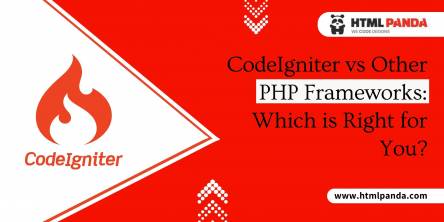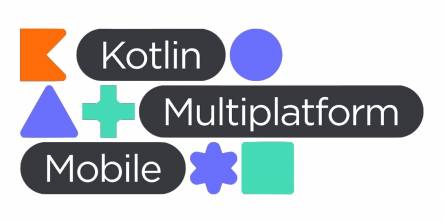A Guide to Web Application Firewalls

Web Application Firewalls (WAFs) form a significant component of modern cybersecurity infrastructure and shield web applications from any potential threats and attacks. They are designed to filter, monitor, and block malicious HTTP/S traffic between a web application and the internet.
In this article, we will explore the various types of Web Application Firewalls, along with their advantages and disadvantages.
What is a Web Application Firewall?
A Web Application Firewall (WAF) is a protocol layer 7 defense and protects web applications by monitoring and filtering HTTP traffic between web applications and the internet. A typical WAF protects web applications from cross-site forgery, cross-site scripting (XSS), SQL injection or file inclusion and more. It behaves like a reverse proxy, and secures the server from exposure by making clients pass through it before reaching the server.
A WAF also functions using a set of rules called policies. These policies filter out the malicious traffic and protect the vulnerabilities in the application. Web application firewalls have gained popularity because of the speed and ease with which policy modifications can be implemented.
Types of Web Application Firewalls
Web Application Firewalls (WAFs) can be categorized into three different types. Each category of WAF has its own pros and cons and are used as per specific resources and requirements.
Network based Web Application Firewalls: Network based web application firewalls are also known as appliance based or hardware based firewalls, and are usually installed on-site or on a hardware appliance. They connect with local servers and the internet, and protect the applications by monitoring and filtering the network traffic. These WAFs operate using the HTTP application layer and filtering the traffic before sending it to a server.
Advantages
• Performance - The network based WAFs are known for their reliability, operate at high speeds. Their low latency makes them an ideal choice for high traffic loads.
• Mitigates application level attacks - Network based WAFs are known for their threat prevention capablites and adapt easily to evolving threats.
• DDoS protection - These WAFs offer strong protection against Distributed Denial of Service (DDoS) attacks.
Disadvantages
• Cost - These WAFs are a more expensive option because of the upfront hardware costs.
• Maintenance - Network based WAFs require a controlled environment along with skilled manpower for their management and maintenance.
• False positives - They can sometimes produce false positives.
Host based Web Application Firewalls: Host base Web Application Firewall (WAF) is also known as software based web application firewall and these terms can be used interchangeably, with some differences in implementation and functionality. The term software based web application firewall is used when it's deployed in a cloud environment or across multiple servers.
These WAFs exist as modules for a web server and are generally integrated into the application software. This makes them more affordable when compared to network based WAFs. These are more suitable to small web applications but can consume local server resources, and potentially downgrade the performance.
Advantages
• Targeted granular control - These host based WAFs can provide a fine or granular level of control over web applications that are being secured.
• Versatile - These WAFs can be employed on any type of a web server.
• Cost effective - Since these WAFs do not require specific hardware solutions, they are less expensive than network based WAFs.
Disadvantages
• Scope - Since these host based WAFs protect only the web application that is running on the server, the scope of security or protection is limited.
• Consumption - They can consume more local server resources, and this can downgrade performance.
• Maintenance - Implementation of host based WAFs can be complex, and can also require more time for maintenance.
Cloud based Web Application Firewalls: Cloud based web application firewalls are hosted in the cloud and protect web applications from basic or common web based threats such as SQL injection, cross site scripting or any other hacks. These WAFs can be deployed quickly, can block malicious attacks by providing full visibility into the environment. Cloud based WAFs can be purchased by subscription and are maintained and updated by cloud security providers, and are a cost effective and scalable option for businesses.
Advantages
• Easy deployment - Easy configuration capabilities of cloud based WAFs makes it easy to deploy them.
• Scalability - Cloud based WAFs can be scaled as per application requirements.
• Low maintenance - This is low to zero maintenance on users of cloud based WAFs as the responsibility of both maintenance and updates are taken up by the cloud providers.
• Cost effective - Pay-as-you-go cost structure makes it cost effective for users.
• Integration - It is easy to integrate cloud based WAFs with other services.
Disadvantages
• Third party dependence - Users are dependent on cloud providers for security and privacy.
• Restricted customization - Cloud based WAFs offer limited customization as compared to host based solutions.
Final Words
All web application firewalls offer unique advantages that can help secure web applications effectively, but choosing the right WAF that meets the requirements plays a pivotal role in web software development services. Understanding the intricacies of each WAF can help in achieving cost-effective, scalable, and easily deployable solutions.
Similar Articles
In today's technologically advanced landscape, understanding heat distribution is critical for enhancing efficiency and safety across various sectors. Infrared thermography, a pivotal imaging technique, has revolutionized how professionals view and analyze thermal performance.
In this digital age, there are many options available for marketing, but the one that stands out as one that can transform the marketing realm is programmatic connected TV (CTV). The programmatic CTV approach for advertising shows the changing trend in how brands would like to connect with their audience.
PHP has a dominant market position, with over 79% of websites powered to some degree. Developers majorly utilize organized and leveled PHP basic functions, known as PHP frameworks, to create flexible output.
The nonstop hum of machines around us, from the humongous industrial complexes to the processors within the gadgets, shapes our everyday lives. These mechanical advancements have become essential, driving everything from fundamental necessities to our vehicles, airplanes, and so forth.
New methods of managing a Pilate business are transforming the way studios operate. It simplifies routine tasks and helps fitness businesses to grow and facilitate their customers in various ways.
Discover if the S23 Ultra case is compatible with the S24 Ultra. Get insights on fit, protection, and functionality in this comparison.
In the era of astoundingly quick technological progress, organizations are increasingly feeling the need to adjust to the evolving market demands and their requirements by embracing digital transformation
With the rise of mobile devices and the ever-growing demand for cross-platform solutions, businesses are constantly seeking efficient ways to develop applications that can be used on multiple platforms. This is where Kotlin Multi Platform comes into play. Kotlin Multi-platform is a versatile technology that allows developers to write code once and deploy it on various platforms such as Android, iOS, and web.
Discover reliable network cabling solutions ensuring seamless connectivity for remote work. Enhance productivity with consistent connections anywhere.









